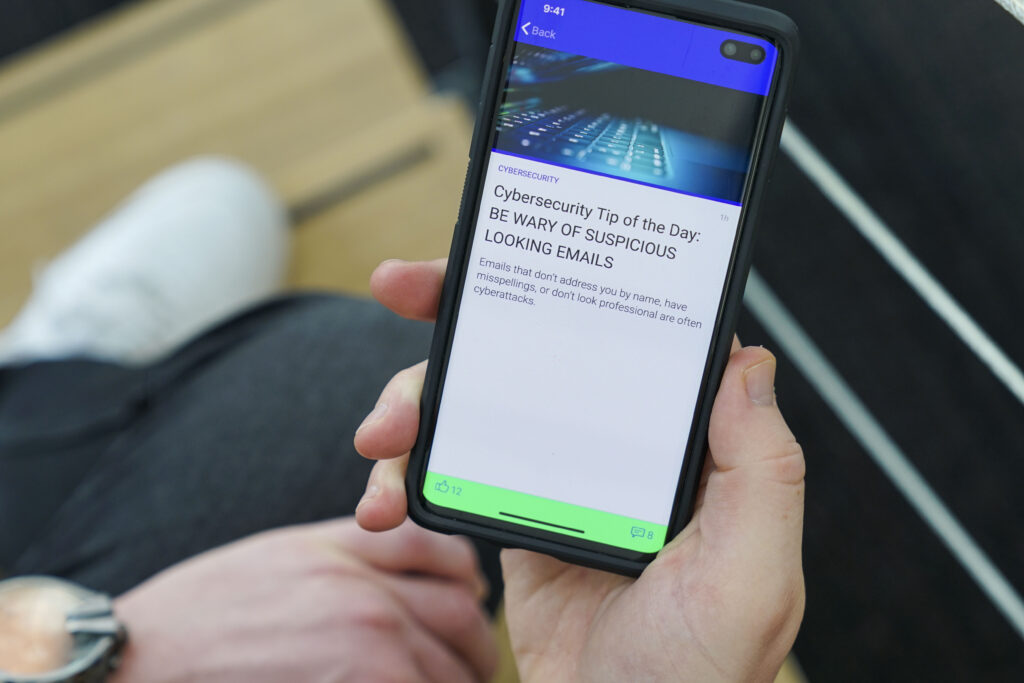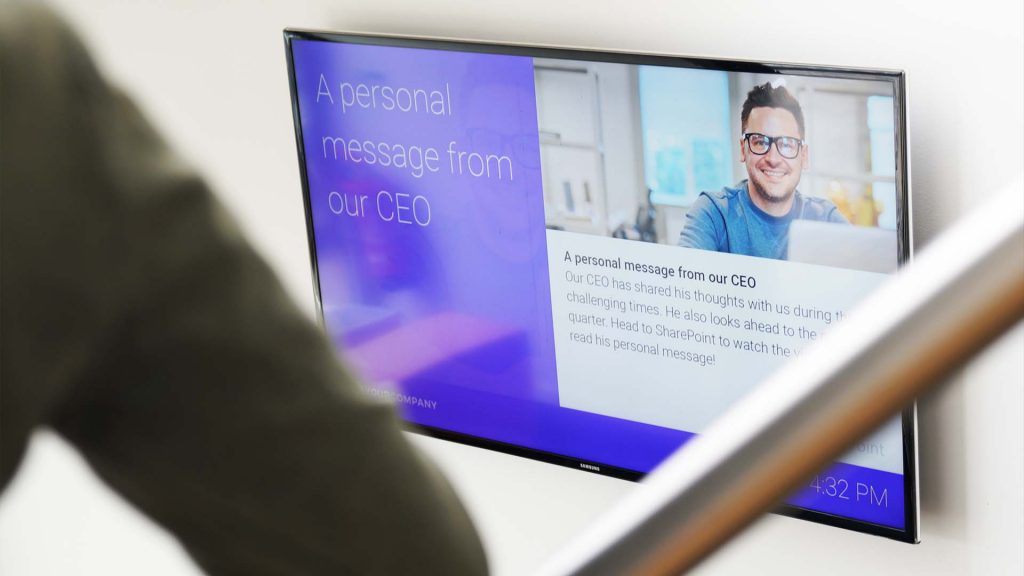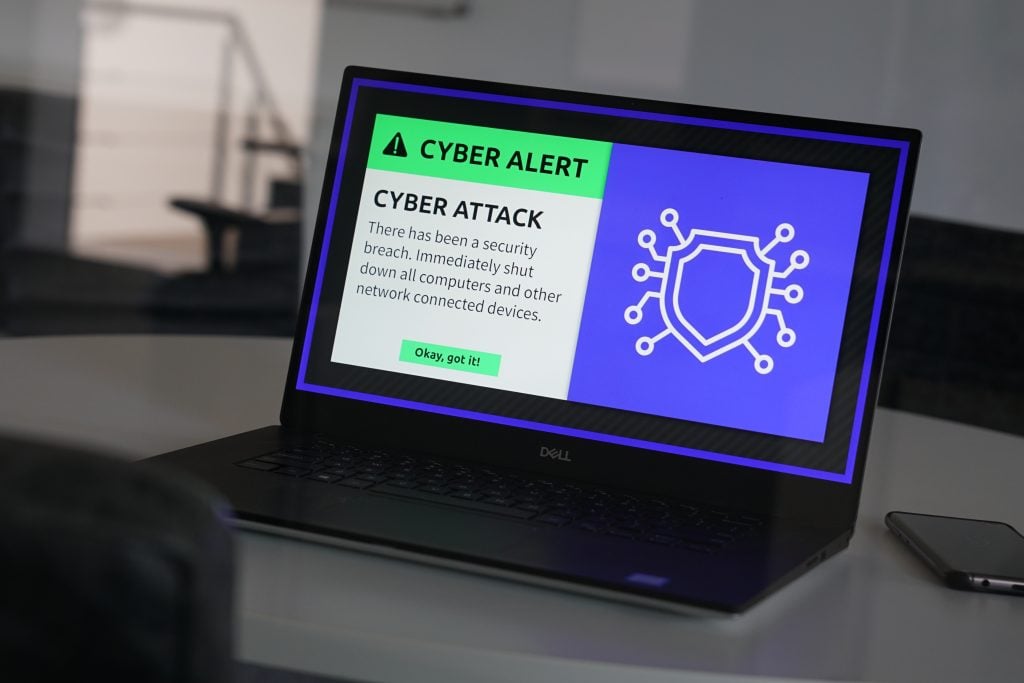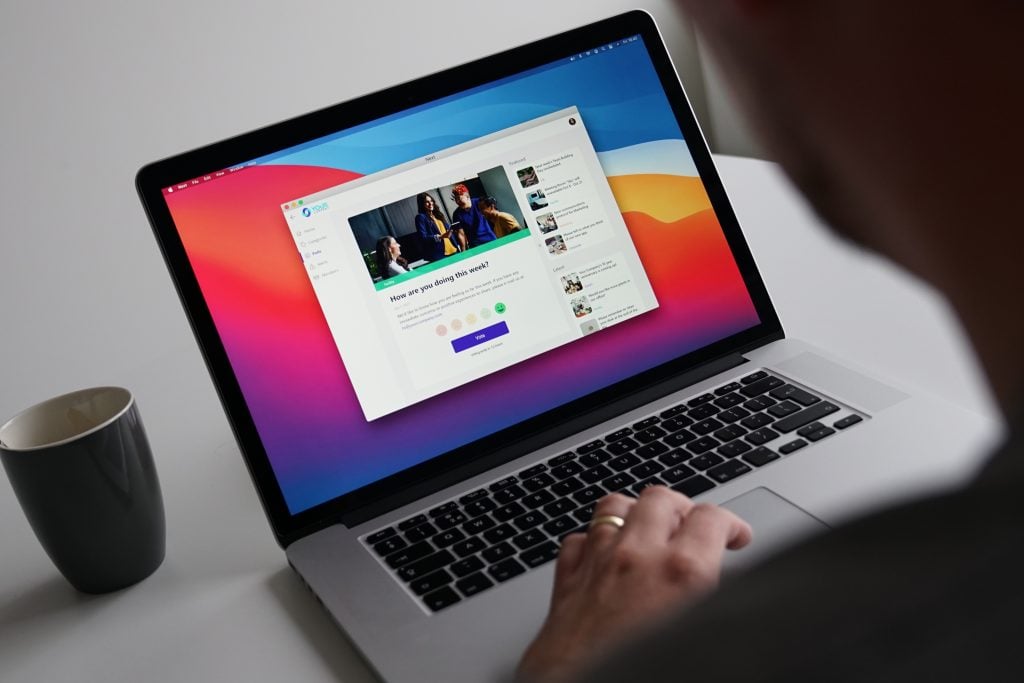The Ultimate Employee Communication Guide for Employee Comms in 2023
Estimated reading time: 11 minutes
Over the past few years, our working environment and relationship with work have significantly transformed. The changes in the workplace have impacted internal communications professionals significantly – as well as the role employee communication plays in organizations across the globe. As an internal communicator, it’s vital to understand these changes and adapt your communication strategies accordingly. Let’s take a look at the ultimate employee communication guide for employee comms in 2023 to guide you through a new year full of challenges.
Table of contents
What is employee communication in 2023?
At its core, employee communication refers to how people in an organization share information. When you’re trying to reach your staff, however, you need to consider your target audiences and stakeholders. Various groups of employees need various approaches and channels.
Using the right tools for the right audience is key; if you don’t know how employees prefer to consume information, you might end up publishing information via channels your staff doesn’t use – the exact opposite of what you’re aiming for.
Your workforce may include non-desk employees, field workers, and office workers. They can all be reached effectively with visual communication. However, the best communication channel for office workers might need to be more effective for your employees out in the field. And this is not the only challenge internal communicators face these days.
Employee communications must constantly evolve to meet employees’ needs in a globalized and digitalized world with continually progressing technology. So, let’s look at the challenges internal communicators may face nowadays and find out how to optimize communication for today’s workforce.
What are common employee communication challenges in 2023?
Each year comes with its own communication challenges and new opportunities to recalibrate agendas. These are often impacted by the year’s events (such as the pandemic), and various workplace developments. Here are a couple of the most important challenges internal communicators may face in 2023:
- Geographically dispersed workforces
The rise of remote work allows employees worldwide to work anytime and anywhere, which is a great shift for many employees across the globe. At the same time, it’s a challenge for internal communicators. Remote work means there is limited face-to-face interaction. With employees spread out across different locations, whether that’s in the same town or even the same country, it can be challenging for internal communicators to ensure consistent messaging and build relationships with employees. Creating a sense of community and belonging can be difficult.
Additionally, there are communication barriers, such as different time zones and languages, which can make it challenging to ensure that all employees receive and understand messages and maintain a consistent tone and voice across all communication channels.

- Standing out among the noise
There is so much information floating around these days that it’s hard to get employees’ attention. Social media platforms such as Instagram, Pinterest, Snapchat, and TikTok have made creating, sharing, and consuming visual content easier.
These platforms continue to grow; 190 million new users joined social media in 2022. Understandably: social media gives their users a personalized feed on which they can scroll endlessly through attractive and free visual content.
This visual content immediately grabs attention, and in many cases, it keeps the attention longer than textual information will. People are used to having personalized communication ready when they want to; all they have to do is open this app or that website, and it’s there to interact with, so they expect this kind of content in their professional lives.
All of this information is added to the information flow in your organization, adding to the information overload that your staff may encounter daily. When we say people are flooded with information nowadays, we mean they’re flooded: the average employee receives 120 messages per day. It will be hard to make your (maybe slightly boring) messages stand out!
- Irrelevancy of information
Not only do employees receive too much information daily, but much of this information is also irrelevant. Information relevancy can depend on several factors, including employees’ roles and responsibilities, the context in which information is shared, the amount of information being communicated, and the effectiveness of communication channels.
Irrelevant information can lead to information overload, cause distractions, and reduce productivity. This can be particularly problematic in fast-paced work environments where employees need to focus on completing tasks quickly and accurately.
Keeping information relevant requires careful planning, an understanding of your target audiences and their needs, and multiple communication channels that allow you to reach each of your audience groups easily. An employee communication platform that allows targeting predefined audience groups is a great way to ensure your staff gets the right information tailored to their needs and expectations.
Understanding the importance of employee communication
Employee communication is critical for a successful business. Regularly conversing with your employees helps them understand what’s happening and what is important. It gives them a sense of belonging, shows them how they can optimize their work for the organization’s benefit, and leads to higher levels of engagement and increased interest in the organization.
Two-way communication will also allow employees to use their voices, which helps you show your staff you value their opinions and want to make sure their workplace is the best it can be for them. This will lead to a consistent attitude and a shared understanding of the organization’s goals. If staff get the information they need to thrive in their jobs, they will be able to maximize their output and increase the organization’s success.
How to optimize employee communication for today’s workforce?
Effective engagement in today’s workforce requires internal communicators to have a thorough understanding of their audiences, given the diverse communication styles of the many generations in the workplace, the job seeker’s market, and unprecedented external influences. Below are our tips for optimizing employee communications.
1. Make use of multiple channels
Millennials and Gen Z constitute over one-third of the workforce and will soon become the majority. They prefer quick and easy access to information rather than outdated methods such as voicemails, posters, or paper memos. In today’s mobile-first world, you must provide an option to keep employees connected on the go. A smartphone app may be the ideal solution to send real-time updates, polls, and alerts to your staff, regardless of their location.
Additionally, Gen X and baby boomers may prefer other communication methods. Email is a popular communication channel among this audience group, but the intranet and visual communication channels, such as digital signage and corporate screensavers, are also excellent channels to reach these staff members.

2. Ask your staff about their preferences
When you send out a message, your goal is that the people who were meant to receive it, in fact, receive it. However, it isn’t unlikely that some of your staff don’t get your messages and you are creating your content in vain; you may be sending it via the wrong communication channels.
You can make sure your communication strategy works by automatically collecting data – but we’ll get to that later. An important part of getting your messages to your staff is publishing through channels they actually use. Finding out which channels your staff prefer can be as easy as simply asking them which channels they prefer!
Use polls or pulse surveys to find out which channel they are most likely to use when they want to find important information or company news. Analyze the answers when they get in and define audience groups based on preferences to ensure you’re using the right channel to reach the people you should be reaching. You’ll see it will help you greatly increase your readership levels and click-through rates.
3. Know when to stay silent
Over the past few years, we’ve had much to communicate about: changing lockdown measures, stricter hygiene regulations, work-from-home protocols, and new, related benefits. We have received an enormous amount of information, both at work and in our private lives – on top of the huge flow of information that was already circulating in your organization.
This amount of information probably results in an information overload for some of your employees. In 2023, less is more when it comes to internal communication. This doesn’t mean you should stop communicating entirely; comms teams are obviously still responsible for keeping employees informed of the goings-on within their organization. It’s more about deliberately embedding moments of silence where employees cannot be disturbed or interrupted by ‘important’ information.
So, in 2023, include moments without communication in your content calendar. Don’t publish news during lunch breaks; let people take a break in peace. Don’t publish on days when important projects are being finished. Publish less news in overall busy weeks. Balance is key!

4. Use visual communication and integrate video
When your employees are busy doing their jobs, they don’t have time to digest a long, corporate memo. Delivering communication in formats that make it easier for your staff to understand and retain the message is a must in today’s working climate, where every piece of information competes for attention.
The solution to this problem lies in visual communication, which is perfectly suited to grab attention fast and keep it. Using captivating images, infographics, or videos to convey your message is more effective in getting your employees to understand it than presenting them with a large block of text. In fact, employees will perform their tasks 7% faster when communications include graphics, and 67% are better at finishing their work when a video or an image is added to plain text.
Try out various formats and observe which ones connect well with your audience. You can draw inspiration from the style of video content found on social media platforms such as YouTube or TikTok. These short videos are a good way to grab the attention during a busy workday. Thirty to sixty seconds may sound short, but it allows leaders to connect with employees without taking large chunks out of their day – and it’s still enough time to raise important issues.
5. Collect employee feedback
Collecting employee feedback is critical to understanding your employees’ thoughts and emotions about their experiences within your organization. Collecting employee feedback and paying attention to your staff’s concerns helps organizations understand what is happening with their workforce, which can help identify potential problems early on, allowing you to act proactively and prevent problems from growing or escalating.
Collecting feedback should be an ongoing effort, though: peoples’ opinions change and your organization’s overall sentiment will always be dynamic. Consider using tools that can easily give actionable insights into results and will help you improve the employee experience.
Using polls or pulse surveys that are short and regularly recurring. For example, they can be administered every week, month, or quarter. If they contain the same or nearly the same questions every time, they will help you keep track of your organization’s pulse and track trends over time.

6. Use data to optimize your strategy
Paying attention to data is essential to determine whether your internal communication strategy is effective. Employee communications carry valuable information that employees should be aware of. Monitoring your employee communication is an effective way to see if this information reaches the people it should. If, for example, only 30 percent of employees read your messages, that may be a problem, depending on the messages’ content.
Regularly analyzing the metrics behind your internal comms can help assess your strategy’s effectiveness. Using an interactive statistics dashboard such as Netpresenter’s statistics feature could help you discover patterns to the messaging that performs best, such as communication channels, content type, or best time of the day. Instead of just reviewing these results, use the data you collect to optimize your strategy and your overall employee communications.
Data can help you connect the right comms channel to the right audience group, identify which types of communication are most effective and which may need improvement, improve timing, and help you target your communications more effectively.
Staying ahead of emerging trends will help internal communications effectively tackle the challenges that lie ahead in each coming year. However, their efforts will likely be insufficient without the appropriate technology to support their strategies. Want to learn how Netpresenter can help you tackle your communication challenges? Get in touch with our consultants or schedule a free 30-minute demo to see what we can do for your organization. Or download our free guide to find the right communication tools to reach your employees.

